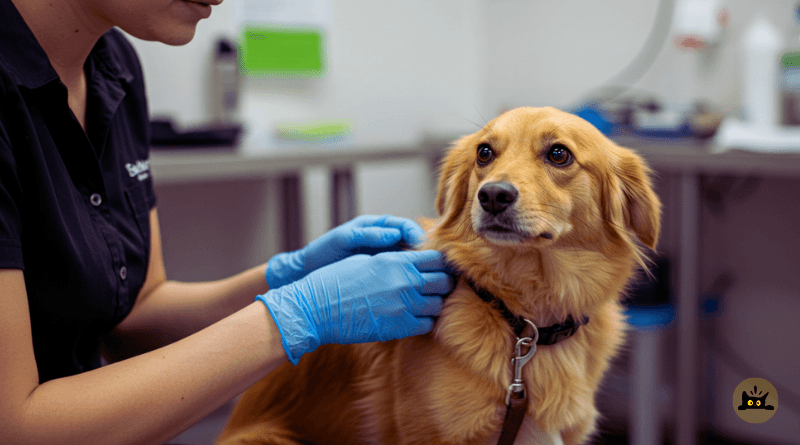Ticks are a common sight when you spend time outdoors, especially as the weather warms up. Lyme Disease Prevention is essential because Lyme disease is a bacterial infection spread by tick bites that can sometimes cause serious health problems in dogs. While many dogs show no signs of trouble, some may experience joint pain, tiredness, or fever. By taking simple steps, you can help keep your dog safe and enjoy your time outside without worry.
Understanding Lyme Disease in Dogs
Lyme disease is spread when a tick that carries the bacteria attaches to your dog for at least one or two days. Once the bacteria get into your dog’s blood, they can affect important parts of the body like joints, kidneys, and sometimes even the heart. Although people often hear about Lyme disease in humans, our dogs can get it too. Research shows that while most dogs do not show any clear signs, a smaller number may become ill with discomfort or even serious symptoms. This is why regular vet check-ups and simple preventive steps are so important.
Recognizing the Signs
Early detection can make a big difference. Dogs with Lyme disease might not always show easy-to-spot symptoms, but here are some common signs you can look out for:
- Limping or Leg Discomfort: Your dog might sometimes limp or seem to have sore legs, which can be an early hint of joint pain.
- Tiredness and Fever: A sudden drop in energy along with a fever that appears unexpectedly may be a sign that something is wrong.
- Changes in Eating: If your dog is eating less or seems uninterested in food, it’s worth checking in with your vet.
- Enlarged Glands: In some cases, a vet may notice that your dog’s glands feel larger than usual during an exam.
Because not every dog will show clear signs of Lyme disease, it is a good idea to check your dog for ticks after every outdoor adventure. A careful look over your dog’s body can help you spot any changes early on.
Lyme Disease Prevention: How to Protect Your Dog
Use Tick Prevention Products
Keeping ticks away is the best way to protect your dog. Here are some simple ideas:
- Ask your Vet: Speak with your vet about using tick prevention products. They may suggest spot-on treatments or pills that help keep ticks from latching onto your dog.
- Regular Applications: In areas where ticks are common, using these products all year round can really help cut down the chance of a tick bite.
Do a Regular Tick Inspection
After playing in grassy or wooded areas, take a moment to inspect your dog’s body. Look carefully in places like under the collar, behind the ears, and between the toes. A quick tick check can make a big difference in preventing the infection.
Keep Your Dog Brushed and Your Yard Neat
Regular brushing not only keeps your dog looking fresh and tidy but also helps you find ticks early. In addition, when you keep your yard neat by trimming tall grass and clearing away leaves, you reduce the spots where ticks can hide. Small changes like these go a long way in protecting your dog.
Talk About the Lyme Vaccine
In areas where Lyme disease is common, your vet might suggest a Lyme vaccine as an extra safety step. Although the vaccine does not guarantee full protection, it can help lower the chances of your dog getting very sick. Always discuss your options with your vet to decide if this is right for your pet.
What to Do If You Spot a Tick
Even when you take every precaution, ticks can sometimes get on your dog. If you find one, follow these friendly steps:
- Remove It Carefully: Use a small pair of tweezers to grab the tick as close to your dog’s skin as you can. Pull it straight out without turning to make sure nothing is left behind.
- Clean the Area: Gently clean the area around the bite with a pet-safe cleaning solution. This helps reduce the chance of any further problems.
- Keep an Eye on Your Dog: For the next few weeks, watch your dog for any changes such as limping, swelling, or eating less. If you notice anything unusual, contact your vet as soon as possible.
When to Visit Your Vet
Taking care of your dog at home is a great start, but there are times when a vet visit is necessary. If your dog keeps showing signs like limping, fever, or any noticeable changes in behavior, it’s time to get professional help. Simple blood tests can usually show if your dog has Lyme disease. Starting treatment early often with antibiotics recommended by your vet can help clear up the symptoms and stop the disease from getting worse. Regular vet visits also give you a chance to discuss any concerns and update your dog’s protection plan if needed.
Conclusion: Enjoy Outdoor Time Safely
Keeping your dog safe from ticks and practicing effective Lyme Disease Prevention is all about being watchful and taking simple precautions. Using tick prevention products, doing regular tick inspections, and keeping both your dog and your yard neat are easy ways to reduce the risk of infection. By working closely with your vet and knowing the signs to look out for, you can quickly respond if something doesn’t seem right.
In our active lives, where spending time outside is very common, a little extra effort can really keep your dog healthy and happy. With these simple steps, you can both enjoy nature and have peace of mind knowing you’re doing your best to protect your furry friend.
Sources : Blue Cross for Pets, PetMD, American Animal Hospital Association
Check out another article in this category that might interest you: Dog Rabies Symptoms and Vaccine Schedule

